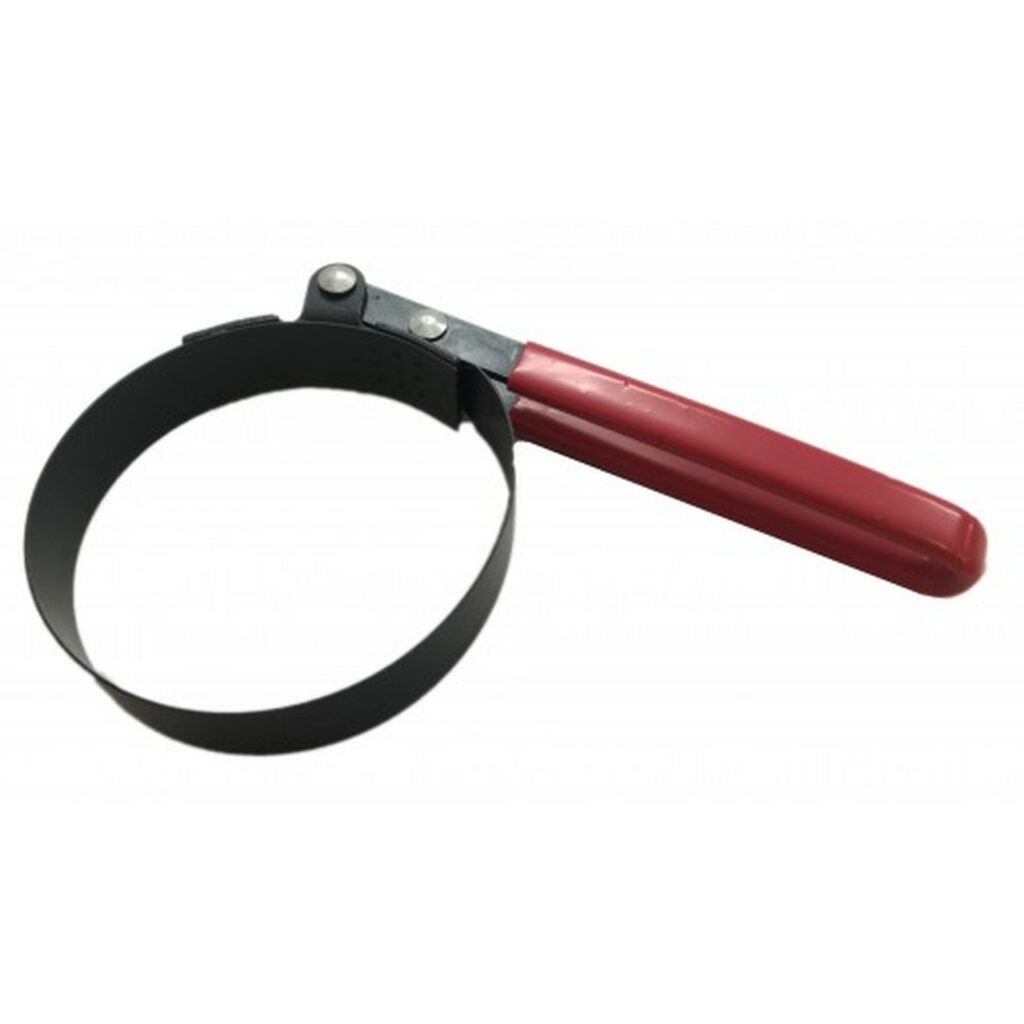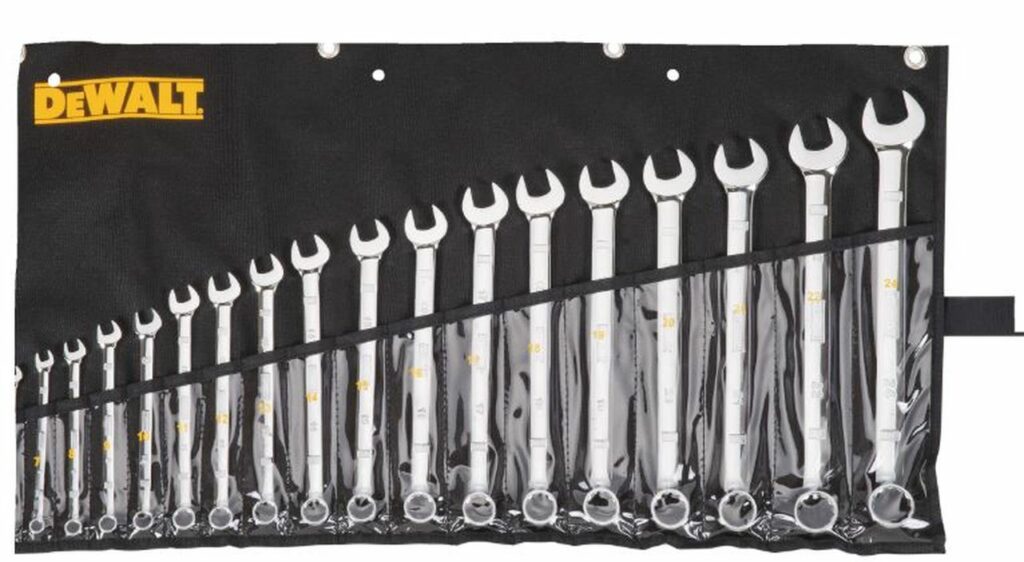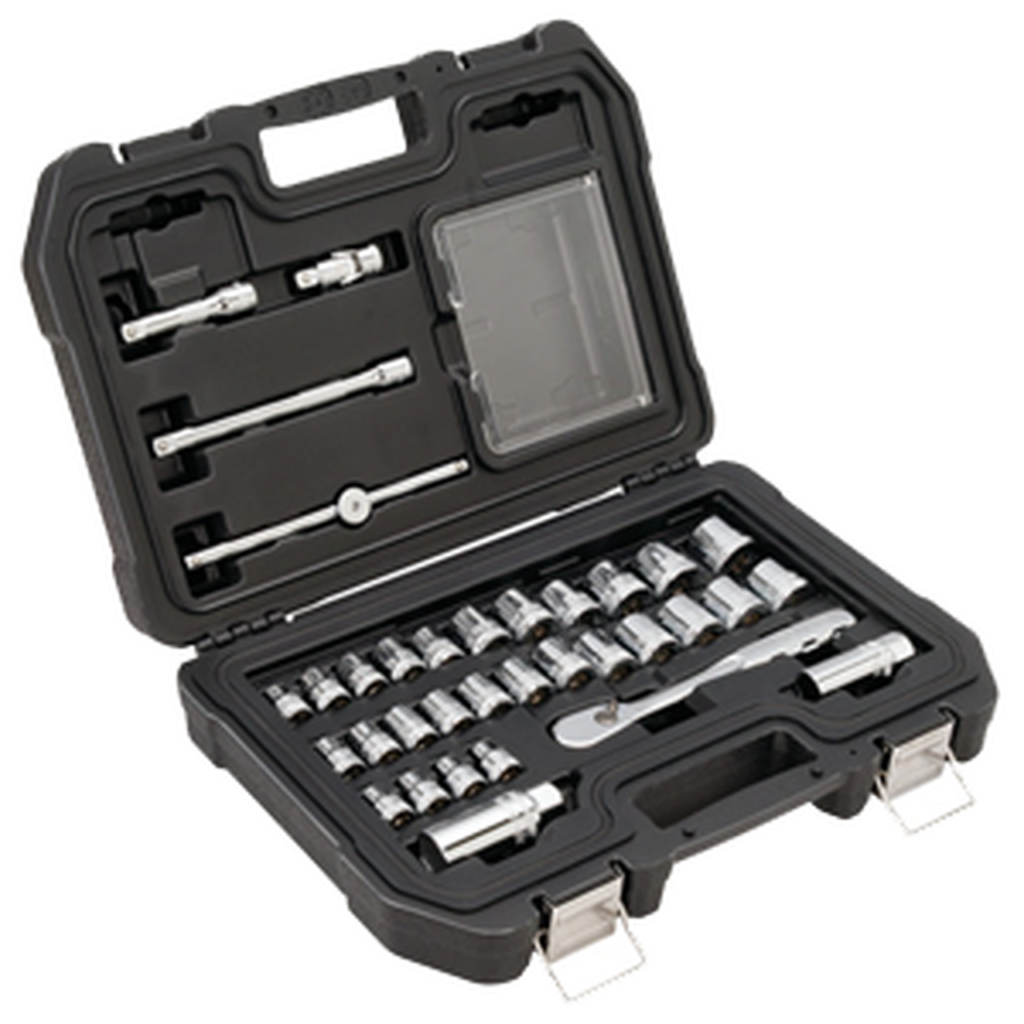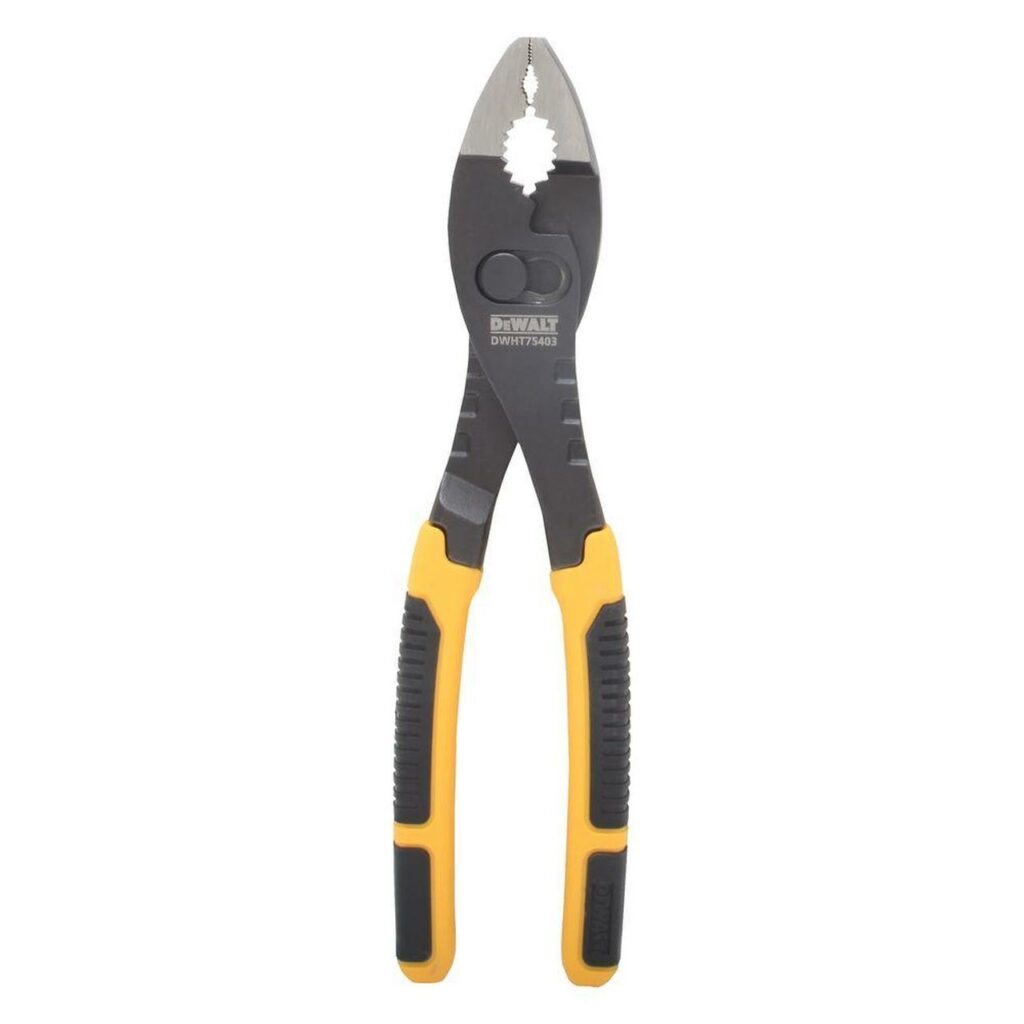To prolong the life of your car’s engine, it’s essential to change the engine oil and filter. There are many contaminants in engine oil that come from a variety of sources.
If you aren’t lucky enough to be driving a Tesla, you’re most likely driving a gasoline engine. The oil is contaminated in these engines primarily by combustion gases seeping past the piston rings. As time goes on and engine components wear, more gases will slip past the rings during the compression and power cycle.
As technology has improved over the past decade, changing your oil easy but it will also reduce the risk of making a mess or costly mistake.
Supplies:

CTA – Oil Filter Wrench – Standard Size

DWMT19237 – 18pc Combo Wrench Set

DWMT19250 – 34pc 3/8 Drive 6 Point Set Metric and SAE

DWHT75403 – 8″ Flush Rivet Slip Joint Pliers
There are a few supplies needed for the procedure:
- Disposable gloves and paper towels
- filter wrench
- correct size socket or wrench
- oil drain pan
When performing an oil change, there are two main preparation methods:
- The first method is to normalize the temperature of the engine. That requires the engine to idle for a time or a few trips around the neighborhood. Now as the engine is warm, drain the pan and change the filter. The thinking behind this method, is that the contaminants are suspended in the oil when the pan is drained. Therefore, draining the contaminants along with the oil.
- The second method is to drain the oil when the engine is cool, when a good amount of the oil has settled into the pan. Both methods will work, however Dr. Devon prefers the latter method.
Whichever method you prefer, the most important step is to develop a routine that works. Make sure the location where the procedure is being performed is clean and reasonably level as most oil pans are formed to tilt toward the drain plug. Draining the oil when the engine is cool (method number two) offers the following benefits: It is not necessary to circle the block a few times or have the engine at high idle for 20 minutes trying to warm the oil; when the engine has been at rest for several hours and the drain plug is removed, the oil is cool and drain flow is more controllable; pressure between the filter and the filter housing has bled off, making filter removal a cleaner process. A cleaner process is generally a quicker process.
Coolant Leak Detection
Another benefit of the second method is that it is easier to detect coolant (antifreeze) leaks. When undisturbed, the water and antifreeze will settle around the drain plug. By first cracking the drain plug slightly, if there is a coolant leak, water and antifreeze will be the first to run out. Use a glass jar to catch what has discharged for inspection.
If only oil emerges, continue to run out to drain plug as the following describes. Coolant leaks may also be observed as brown bubbles above the oil level on the dipstick.
Oil Change Procedure:
- Gather the necessary supplies. Wearing disposable gloves, use a paper towel to clean the area around the oil fill cap.
- Open the cap to break any minor vacuum created when the drain plug is removed. Place the drain pan slightly off-center of the drain plug.
- Using a suitable wrench (preferably six- point), unscrew the drain plug to the end of the threads. Slowly tip the plug upward and away to get a feel of where to place the drain pan to catch the oil. Be sure to place the pan so when draining slows, the pan is catching the oil.
- While the pan is draining, open a container of new oil and pour oil into the center of the new filter. Pressure from the pump pushes the oil through the media (from outside to inside), out the center to the oil galleries. Slowly roll the filter around; this allows the filter media to absorb the oil and minimize oil starvation at the bearings upon initial start-up.
Note: Some people advise against the practice of prefilling the filter. The reason is that new oil is often dirtier than what is recommended for engines. When new oil is introduced into the inside of a new filter, this oil will then pass unfiltered into the engine and critical frictional surfaces (cam/follower, ring/bore, bearing/shaft, etc.).
The angle at which the filter mounts to the engine will dictate how much oil to put in the filter. Filters mount at different angles depending on engine design. If the filter mounts vertically, then fill the filter. Many four- and six-cylinder engine filters mount at an angle. Filling the filter in these instances will cause a mess. - While the filter media is wicking up the oil and the pan is draining, remove the old filter and turn it over to drain. In many cases, the friction provided by the disposable gloves will allow a sufficient grip to unscrew the old filter without using a filter wrench. A filter wrench will be required if the filter is inaccessible by hand, if the filter was over-tightened or the engine was overheated.
- Clean the filter seat surface of the filter housing. Be sure the rubber gasket from the old filter is not stuck to the filter seat surface.
- Clean the area around the drain plug and install; wipe area again and check for drain plug weep. One suggestion here: a copper gasket on the drain plug lasts longer than a fiber washer or nylon gasket.
- After a final fill-up in the center of the new filter, coat the filter seal with new oil. Install the filter according to filter torque instructions; this makes it easier to remove the filter next time. I prefer to begin filling the crankcase with the open container I used for the filter; it helps keep track of the amount. Prop the container into the crankcase fill.
- While the container is draining, clean up the old filter and drain container. Use a type of drain container that seals tightly for recycle purposes. Many refuse stations have a used oil reclamation container.
- In between adding the remaining specified amount to the crankcase, do a final cleanup from underneath, put the tools away and inspect the engine compartment for leaks. After filling with the recommended amount, close the fill cap and remove the disposable gloves.
- Start the engine and check for leaks. This whole process can be accomplished in about 10 minutes. The goal is to develop a routine that is easy to perform and works well.
Don’t forget that everything you need is available at www.devonlube.com. If you decide not to do the process yourself, find a reputable business in your local area and now you can appreciate what they do for you to make sure your vehicle stays in its best shape!
« Back to Blog
